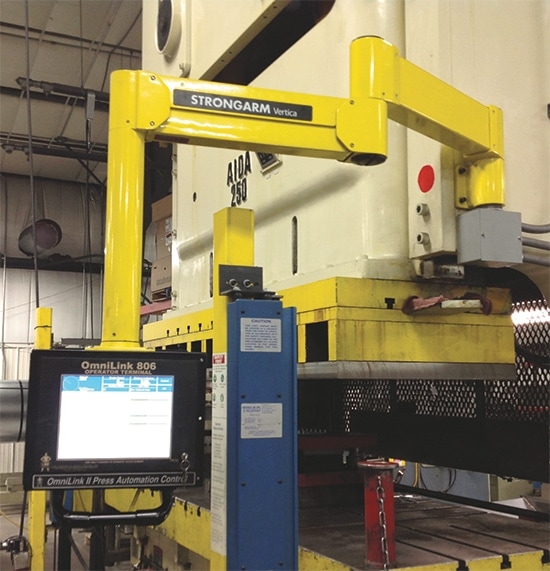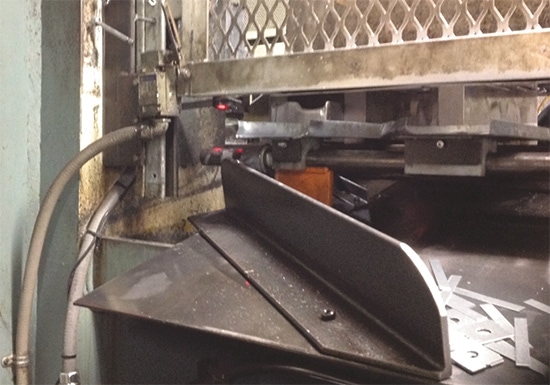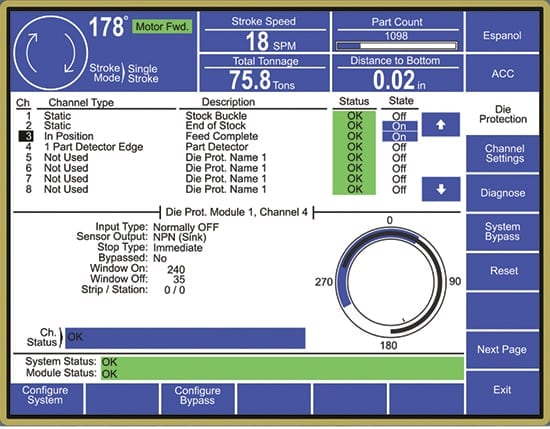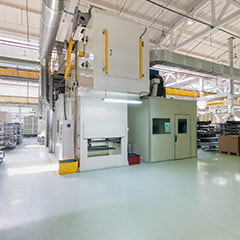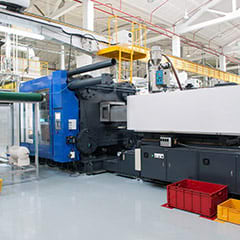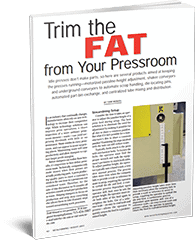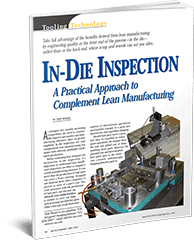Equipment Distribution Consulting Services - New Press Controls & Sensors
TCR’s consulting services allowed a manufacturer to save money, putting a press order on hold by using controls and sensors.
Tenere, Inc., Dresser, WI, manufactures advanced, custom components from plastic and metal for companies with highly demanding, fast-changing needs. Tenere manufactures injection-molded and machined products and also fabricates and stamps sheet metal.
The Consulting Process
For several years, TCR Integrated Stamping Systems, Wisconsin Rapids, WI, had supplied Tenere with Aida presses, feed lines, and other capital equipment. When contacted to partner with Tenere again, TCR president Todd Wenzel recommended new controls rather than more new presses. “I knew the new owners from Watermill were encouraging investment in technology and were more open to new ideas than the previous owners had been,” says Wenzel. “We recommended adding new automation controls (from Link Systems, Nashville TN), to the presses they already had, in order to get more out of the machines.” TCR also recommended adding a sensor lab to Tenere’s operation and tasking one of the firm’s toolmakers to focus on in-die sensor applications to even further optimize press productivity.
“We felt that this approach would provide a more systematic method of applying sensors to tooling and provide better results,” said Wenzel. “We have seen that the stampers who dedicate only one person to be responsible for in-die sensing have the most success. We asked the toolroom manager to recommend an experienced toolmaker who would be up to the challenge of learning how to take sensor technology on the tooling to a high level. The success of the equipment we installed would rely in part on us being able to train him to take full advantage of the technology.”
Stepping up to the plate was an experienced Tenere toolmaker ready and willing to take on a new role. “The company had made use of sensors in the past, but nothing to the level it was now reaching,” Wenzel says. “It was a new challenge, one that it looked forward to spending time on in order to prevent crashes–rather than repairing crashed tools.”
Tenere’s goal was to pursue a growth strategy that involves different layers of simultaneous investment, which in turn would optimize performance with its existing equipment and footprint while adding new equipment and facilities to extend capabilities and capacity. Incremental investments in sensors and controls help the firm drive performance and customer satisfaction.
The first press selected for implementing the new controls was one of the busiest in a building packed with busy presses. TCR installed a Link Systems’ 5100 AMC, (Automation Machine Control) to the press, with 16 channels of die protection, 16 programmable-limit switches, a high-end tonnage monitor and communication for the servo feeds in use.
“This gave Tenere capacity for near-term needs,” Wenzel says, “but we knew the equipment was scalable so it could add even more capacity as the die-protection program took off. It was considering the use of analog measuring sensors, as well as investigating servo-press technology. The Link control supports both of those future anticipated needs.”
In addition, discussions with Tenere’s production and maintenance managers revealed a need for more-efficient scrap removal and die lubrication. So, TCR added a Mayfran Shuffle Drive press-mounted scrap system to the project, and an Industrial Innovations’ spray system for die lubrication. However, not only did they use more sophisticated die-protection capabilities of the process control to protect the tool, but TCR also used the Link control to develop a more integrated production system. The goal being: mistake-proof other parts of the process beyond the tool itself.
“Part-out conveyors and the Mayfran scrap system now start automatically when the operator starts the press,” Wenzel explains. “Equally important, sensors monitor the scrap system, not easily seen by the operator, to ensure it runs when it’s meant to and stops the press if the shuffle stops.”
In addition to starting automatically, saving the operator’s time, the conveyors also stop automatically when the press has been idle for longer than one minute. This saves energy and reduces maintenance costs caused by systems needlessly running.
The Project Results
Before installing the new equipment, the press ran with two operators—one handling parts while the other watched for problems in the tooling. Die crashes occurred regularly, causing production delays and overtime for repairs as well as for production to catch up. Now, one operator mans the press to handle the parts, hourly production has doubled, and we haven’t had a single crash. It has been a major success.
Adds Tenere vice president and COO Jon Fisk:
“The new equipment fits perfectly into our lean-manufacturing goals by eliminating downtime, and increasing uptime and reliability. Elimination of crashes has led to consistent on-time deliveries without added costs.”
Fisk then immediately approved the installation of the equipment on three more of the firm’s busiest presses.
“Three more systems received the same upgrades,” Fisk continues. “The results were consistent with the test. Production output increased 60 to 100 percent on most jobs. Our setup times also dropped by 20 percent. Output on one job in particular —a large delicate part—actually increased from 700 parts/shift to more than 2900 parts/shift. That increase of more than 400 percent was not common, but it was not unique.” MF
You can read the full article at Metal Forming Magazine.

 Close
Close